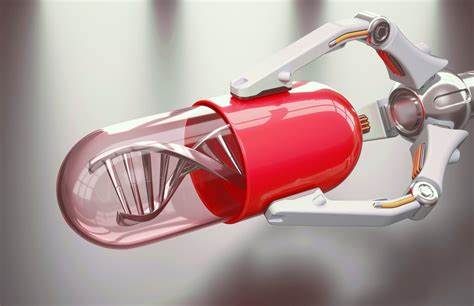
Philippe Desjardins, Lab Productivity Scientist, Agilent Technologies, Wilmington, Delaware, United States
Pharmaceutical companies are poised for significant growth within the Asia Pacific region, with projections estimated as high as 42 per cent (2018-2022). The Asian healthcare market is expected to grow by almost $200 billion between 2016 and 2020, to $2,660 billion. Key factors include an ageing population, a growing middle class and increasing rates of chronic diseases in the region. To address the need for speed and reliability for this growth, there is a greater need for laboratory efficiency in the region.
Improving laboratory operations
Laboratories in the Asia Pacific are looking to streamline processes and improve efficiencies to meet growing demands in the region. For example, in 2018, the government in Vietnam announced its vision to modernise clinical laboratory practices to specifically improve quality standards and workflows in order to optimize turnaround times (TATs).
Which is why many scientific organizations are now turning to data-intelligence systems to provide visibility into the operations of labs to help drive decision-making. The importance laboratory leaders place on increasing speed, optimization, and efficiency was recently highlighted in a Pharmaceutical Laboratory Leaders Survey:
McKinsey Global Institute estimates that applying big-data strategies to better inform decisions could generate up to $100 billion in value annually across the US healthcare system by optimizing innovation, improving the efficiency of research and clinical trials. New tools for physicians, consumers, insurers and regulators will be needed to meet the promise of more individualized approaches.
Laboratories in the Asia Pacific region will experience the same benefits by using data in a similar manner to improve lab productivity and efficiency. Increasing laboratory efficiency can be broken down into two broad categories: sample analysis throughput and laboratory operations.
Advanced laboratory monitoring
As laboratory complexity continues to grow with an extensive array of instrumentation and methods, the ability to comprehensively monitor all assets and resources has become of paramount importance. Advanced lab-wide monitoring and management capabilities can fill this need by bringing clarity and control to laboratory operations, providing insight into inventory control, fleet right-sizing, and many other aspects needed to optimize laboratory operations.
Lab visualization dashboards display, which laboratory assets are being used with profound clarity by tracking various aspects of laboratory operations.
For example, a visualization dashboard displays an instrumentation heat map that provides a snapshot of the entire fleet based on the individual instrument usage. This comprehensive view of instrument utilization forms the basis for data-driven decisions. In addition, these programmes can also identify workflow bottlenecks, capacity issues, and other inefficiencies.
The information is relatively easy to access and use. By applying appropriate filters, the visualization program can determine precise frequency and usage patterns, allowing lab managers insight into individual instruments as well as a lab-wide view of all instrumentation in concert.
By ‘turning on the lights’ in this manner, utilization programmes provide an excellent view into what is actually happening in the lab in real time. Users immediately see bottlenecks and other inefficiencies and can now proactively address them before serious issues arise.
High-growth market regions, such as Vietnam, can greatly benefit from such data-driven technologies, where there is a lack of homogeneity among facilities with differing capabilities amongst staff, equipment and quality management.
Change management expertise
In today’s fast-paced world, change management can be a burden. Agility and flexibility are essential. Laboratories need to adapt rapidly to changing business conditions and market demands to avoid falling behind competitors in an increasingly competitive industry. To prevent this, it is imperative to use a combination of data intelligence and expert guidance to ensure positive change and increase efficiency.
Industry expertise can shed light on how best to optimize the size of an instrument fleet and ‘balance’ instrument utilization, making the laboratory nimble and able to address new demands by using data tools to control all laboratory assets more effectively.
Advancing lab operations can be viewed as three distinct phases: simplification, optimization, and transformation. To begin the process, simplification requires an assessment of all laboratory assets to know the status quo. As we have seen, data-intelligence tools help to visualize the entire fleet and allow for better control over all instruments. Optimization combines the utilization of data with other instrument attributes, such as service history, age of equipment, and end-of-service terms; a risk score can be developed to measure the ‘health’ and viability of each instrument. The final step would be the transformation of all lab operations to a lab-wide, data-intelligence management system ensures that all instrument utilization and expenditures achieve maximum efficiency.
Major scientific organizations must also balance productivity while ensuring sustainability goals. The level of energy consumption for a typical laboratory is surprisingly high. For example, a laboratory in Singapore can consume 5-10 times more energy per unit area compared to their office space counterparts, as noted by Sustainable Energy Association of Singapore.
With advanced monitoring tools, laboratories can now look at the total energy output and identify ways to optimize processes and reduce energy cost through data analysis. By having visibility across all equipment used in the laboratory, managers can now easily see the entirety of their operations in a lab-wide manner, identifying which instruments are used frequently, and where there is room for optimization. Ageing equipment can then be scheduled for early replacement with more efficient instrumentation, limiting interruptions and helping the laboratory become more environmentally friendly.
Laboratory intelligence systems
As the complexity and interconnectivity of scientific systems continues to rapidly change the laboratory environment, there is an ever-increasing demand for higher efficiency. Simultaneously, there are pressures on laboratories to minimize cost, particularly by keeping the manpower to a minimum. The diminishing bandwidth to increase laboratory efficiency often results in too much time being spent on operational issues rather than value-added research.
The demand for operational excellence is growing rapidly, even to the level of machine learning, where artificial intelligence (AI) is currently being explored to expand lab-wide visibility and efficiency with unprecedented refinement.
Machine learning is particularly beneficial in the laboratory environment, as today’s labs are comprised of an extensive array of instrumentation from various manufacturers with numerous models and configurations, each having different methods and applications. The exponential growth in laboratory complexity requires a better understanding of how each instrument behaves within a complex matrix of interactions.
The ability to monitor all laboratory operations and continually learn from these various interactions is the core reasoning behind introducing AI into the laboratory environment. The adoption of such a powerful ability will become a necessary component of scientific productivity. Business models for scientific advancement will demand efficiency levels that are only now truly beginning to be understood. A centralized artificial intelligence system can establish relationships between instruments and productivity, driving more efficient and accurate results. AI is the inevitable next step in the creation of lab management systems that are so efficient, only machine learning will be able to produce them.




